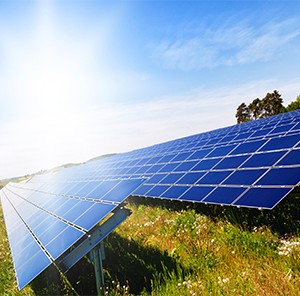Higher-Efficiency Photovoltaic and Thermoelectric Solar Power Generation: A Hybrid Story
 Tech Blog Thursday is an original monthly blog series that mixes serious science with humor and easily recognizable analogies for the less-than-scientifically inclined. The purpose of this blog series is to illustrate the potential of not-yet-commercialized technology and encourage excitement about the possibilities.
Tech Blog Thursday is an original monthly blog series that mixes serious science with humor and easily recognizable analogies for the less-than-scientifically inclined. The purpose of this blog series is to illustrate the potential of not-yet-commercialized technology and encourage excitement about the possibilities.
June 11, 2015
The story behind the new hybrid solar cell developed at UCF begins with a common problem of decreased solar cell efficiency (performance plummets when it’s either too hot or too cold). Like Goldilocks looking for her perfect bowl of porridge, photovoltaic (PV) cells need temperatures to be just right. UCF Researchers have created a new way to combine the best elements of PV and thermoelectrics (TE) for solar power generation, forming a better way to produce renewable energy.
Sure, other PVs and TEs had been coupled in the past, but this perfected pairing is different. Temperature modulation, where PVs are weakest, is where TEs come in to turn up the heat or cool things down, to boost efficiency.
This hybrid technology works in three ways.
The first mode uses heat generated from absorbed solar energy and other heat-generating processes, like the ohmic heat from current flow in the PV cells and connections. By configuring a TE cell between this “hot side” and a colder ambient, electric energy is produced (the Seebeck Effect). Combining this additional energy with the energy produced by the PV cell raises the hybrid’s efficiency by about 7 percent in initial calculations.
The second mode uses the TE cell as a Peltier Effect cooler to cool the PV cell itself. This effectively increases the output power of the PV cell under typical warm weather conditions, cells on a rooftop for example, in contrast to the expected significant decline in power and energy output as cell temperature increases.
In the third mode, the TE cooler can be driven in reverse so it becomes a TE heater. During extremely cold nights, the module can protect from damage caused to PV systems.
The hybrid technology’s ability to easily switch between modes to optimize the system output significantly increases its value. On a very cold sunlit day, the relatively low ambient temperature calls for the system’s first mode. On a very hot day, the second mode is best. The hybrid module can make the most of temperature variations in a day by operating in one mode earlier in the day before temperatures rise, and then switching to a mode that’s more effective in heat as the day goes on.
For more information or for more “hot commodity” technologies, contact Raju Nagaiah, Ph.D.